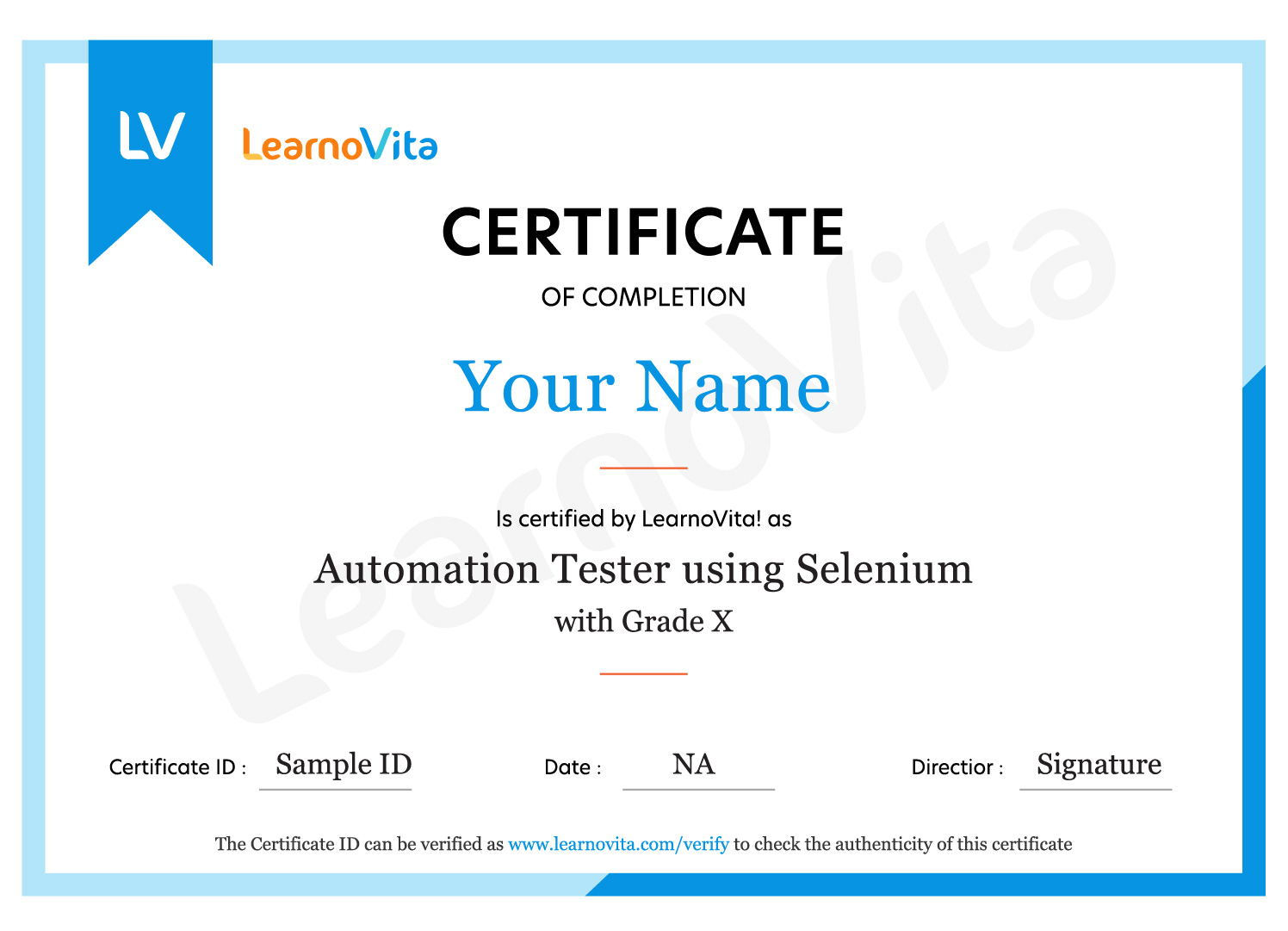An overview of Embedded Systems Training
Our Embedded Systems Course in Chennai offers comprehensive Embedded Systems Training, focusing on both theoretical and practical aspects of embedded system design and development. The Embedded Systems Training in Chennai covers microcontrollers, sensors, real-time operating systems, and hardware-software interfacing. With expert instructors, hands-on projects, and Embedded Systems Certification upon completion, students gain in-demand skills. We also provide Embedded Systems Course with Placement assistance, ensuring successful career outcomes. Enroll now for Embedded Systems Certification Course in Chennai and Gain Your Career.
Additional Info
Future Trends in Embedded Systems Training
- IoT Integration: The integration of IoT (Internet of Things) with embedded systems is rapidly growing. As devices become more interconnected, the demand for embedded systems professionals skilled in IoT is increasing. Training in this area helps developers build systems that collect and share data seamlessly, enabling smarter devices in homes, industries, and healthcare.
- Artificial Intelligence and Machine Learning: Embedded systems are increasingly incorporating AI and machine learning to perform complex tasks without external servers. Training programs are focusing on equipping professionals with the skills to integrate machine learning models directly into embedded devices. This trend opens up opportunities in areas like robotics, smart vehicles, and predictive maintenance.
- Edge Computing:Edge computing is revolutionizing embedded systems by enabling data processing closer to the source of generation rather than relying on centralized cloud computing. Embedded systems with edge computing capabilities allow for faster processing, reduced latency, and more efficient operations, making them ideal for real-time applications like autonomous vehicles and industrial automation.
- Low-Power Embedded Systems: As devices become more mobile and energy-conscious, low-power embedded systems are in high demand. Training now includes energy-efficient design practices, ensuring that devices can run longer on smaller batteries. This trend is particularly significant in wearables, medical devices, and remote sensors, where battery life is crucial.
- 5G Connectivity: With the rise of 5G networks, embedded systems are evolving to support faster communication and low latency. Embedded systems training now includes 5G integration, enabling the creation of smarter devices that can handle higher data transfer rates and provide enhanced real-time performance in applications like smart cities, healthcare, and autonomous vehicles.
- Security Features in Embedded Systems: As cyber threats continue to grow, the need for security in embedded systems is becoming critical. Training in embedded systems now includes best practices in secure coding, encryption techniques, and threat detection. This ensures the development of systems that are resilient to hacking, making them vital for industries like healthcare, automotive, and critical infrastructure.
- Autonomous Systems and Robotics: The demand for embedded systems in robotics and autonomous vehicles is accelerating. Training is now focused on designing systems capable of handling complex tasks such as navigation, decision-making, and interaction with the environment. This trend is shaping industries such as manufacturing, agriculture, and logistics, where automation is increasingly taking center stage.
- Real-Time Systems: Real-time embedded systems are critical for applications where timing is essential, such as automotive safety, medical equipment, and industrial controls. Training programs are emphasizing real-time operating systems (RTOS) and their application in ensuring precise control and synchronization. As industries continue to rely on real-time systems, these skills are becoming more sought after.
- Wearable Technology: Wearable devices, from fitness trackers to health-monitoring gadgets, are driving innovation in embedded systems. The focus is on miniaturization, power efficiency, and seamless connectivity. Embedded systems training now includes topics like Bluetooth, low-power processors, and data integration, preparing professionals to work on cutting-edge wearable technologies that improve quality of life.
- Cloud Integration: Embedded systems are no longer isolated devices; they are often part of a larger cloud-based ecosystem. Training now includes cloud integration, enabling embedded systems to upload and analyze data remotely. This trend is prominent in areas like smart homes, industrial IoT, and fleet management, where data needs to be processed in real time and remotely stored for analysis and optimization.
Essential Tools and Technologies in Embedded Systems Training
- Microcontrollers (MCUs): Microcontrollers are at the core of embedded systems. These small, integrated circuits are responsible for controlling devices by processing input and providing output. Popular microcontrollers like Arduino, Raspberry Pi, and STM32 offer low-power consumption and flexibility. Understanding microcontroller architecture and programming is essential for anyone working in embedded systems, as it forms the foundation of many applications like robotics, home automation, and IoT.
- Real-Time Operating Systems (RTOS): RTOS is designed for systems that require real-time processing, ensuring that tasks are executed within a specific time frame. It provides essential features like multitasking, scheduling, and resource management, enabling embedded systems to handle critical tasks efficiently. Training in RTOS platforms like FreeRTOS, VxWorks, and μC/OS equips professionals with the skills to develop time-sensitive applications in industries like automotive, aerospace, and medical devices.
- Embedded C Programming: Embedded C is the most widely used programming language for embedded systems due to its close relationship with hardware. It provides low-level control over hardware components and is suitable for resource-constrained environments. Mastering Embedded C allows developers to write efficient code that interacts directly with hardware, making it an essential skill for designing performance-optimized embedded solutions across industries.
- Integrated Development Environments (IDEs): IDEs like Keil, MPLAB X, and IAR Embedded Workbench provide an integrated platform for coding, debugging, and testing embedded systems. These tools offer user-friendly interfaces, rich debugging features, and compatibility with various microcontrollers, making development faster and easier. Familiarity with these IDEs helps embedded system engineers streamline the coding and development process, ensuring robust and efficient embedded applications.
- Oscilloscopes: Oscilloscopes are critical tools for measuring and analyzing the signals in embedded systems. They help engineers visualize the electrical behavior of a circuit in real time, allowing for precise troubleshooting. Oscilloscopes are widely used for checking timing, voltage levels, and waveforms of signals, ensuring that embedded devices function as expected. Mastering their usage is crucial for anyone involved in hardware design or testing in embedded systems.
- Circuit Simulation Software: Simulation tools like Proteus, LTspice, and Multisim allow engineers to model and simulate embedded system circuits before building physical prototypes. These tools help predict how a circuit will behave, identify potential issues, and optimize designs. Simulating circuits ensures fewer errors during actual hardware implementation and speeds up the development process. Learning these tools is vital for embedded systems designers who want to refine their circuits efficiently.
- PCB Design Tools: Printed Circuit Boards (PCBs) are the backbone of embedded hardware, and PCB design tools like Eagle, Altium Designer, and KiCad help engineers design custom circuits. These tools offer features for schematic capture, layout design, and component selection, ensuring high-quality PCB designs. PCB design skills are crucial for embedded systems professionals, especially those working in hardware development or product design.
- Bluetooth and Wi-Fi Modules: Wireless communication modules like Bluetooth (HC-05, ESP32) and Wi-Fi (ESP8266, ESP32) are essential for enabling connectivity in embedded systems. These modules allow devices to communicate with each other and with cloud-based platforms, making them ideal for IoT applications. Understanding how to integrate these modules into embedded designs is important for professionals developing connected devices, from smart home gadgets to industrial sensors.
- JTAG Debugging Tools: JTAG (Joint Test Action Group) is a standard for testing and debugging embedded systems at the hardware level. JTAG tools like OpenOCD, Segger J-Link, and Xilinx's Vivado provide in-circuit debugging, allowing developers to examine the system's operation and diagnose issues at runtime. Mastering JTAG debugging is essential for embedded engineers, especially for those working with complex hardware or low-level system issues.
- Version Control Systems: Version control systems like Git are essential for managing the source code of embedded systems projects. These tools track changes, facilitate collaboration, and help maintain code integrity across teams. Learning Git, GitHub, or Bitbucket allows embedded systems engineers to work efficiently on large projects and manage codebase evolution. Version control is a critical practice in modern embedded systems development, especially in team-based environments.
Key Roles and Responsibilities in Embedded Systems Training
- Embedded Systems Developer: Embedded systems developers are responsible for designing and coding software that interacts directly with hardware. They work with microcontrollers, sensors, and embedded platforms to create applications that meet specific functionality. Developers must write efficient code, debug software, and ensure the system performs optimally on resource-constrained hardware. They are also involved in testing and validating the functionality of embedded systems. Strong programming skills and knowledge of hardware are essential in this role.
- Hardware Engineer: Hardware engineers in embedded systems design the physical components and circuitry that power embedded devices. They work closely with developers to ensure the hardware aligns with the software requirements. This role involves PCB design, component selection, and ensuring electrical compatibility. Hardware engineers are also responsible for testing the hardware, making improvements, and troubleshooting electrical issues. A solid understanding of circuits, signals, and electromagnetic compatibility is crucial for success.
- Embedded Systems Architect: Embedded systems architects design the overall structure of embedded systems, defining both hardware and software architecture. They work on creating scalable and efficient system designs that meet product requirements. This role involves choosing the right platforms, tools, and technologies, and integrating them into a cohesive system. Architects also need to ensure that the system is reliable and meets performance, safety, and regulatory standards. Their expertise shapes the project's development process from concept to completion.
- Firmware Engineer: Firmware engineers write low-level software that directly interacts with hardware, often embedded within the device itself. They are responsible for creating and updating firmware to control hardware functions such as booting, system configuration, and real-time operations. Firmware engineers also need to ensure that their code is optimized for performance and memory efficiency. Testing and debugging firmware to address hardware malfunctions or improve functionality are part of the job. Expertise in C, assembly, and low-level programming languages is vital.
- Quality Assurance (QA) Engineer: QA engineers in embedded systems focus on ensuring that both the hardware and software meet the desired standards of quality, functionality, and reliability. They perform various tests such as functional, performance, and stress tests to validate the system's robustness. They work closely with developers and hardware engineers to identify and resolve defects early in the development cycle. QA engineers also create test plans, automate testing processes, and ensure compliance with industry regulations. This role requires attention to detail and a thorough understanding of embedded systems.
- Embedded Systems Tester:Embedded systems testers specialize in validating the final product, ensuring it performs as expected in real-world conditions. Their responsibilities include executing predefined test cases, documenting results, and reporting issues. Testers often work with various tools to simulate inputs, monitor outputs, and evaluate system behavior. They are essential in identifying edge cases and ensuring the product meets the performance, security, and safety requirements. Familiarity with both hardware and software testing tools is important in this role.
- System Integrator: System integrators bring together all the elements of an embedded system, including hardware, firmware, and software, into a unified working system. They are responsible for ensuring the components are compatible and function together as intended. This role involves troubleshooting issues that arise during integration and optimizing system performance. System integrators must have a strong understanding of various components and how they interact. They also manage configurations and oversee testing before the final deployment of the system.
- IoT Developer: IoT developers specialize in integrating embedded systems with the Internet of Things (IoT) ecosystem. Their work involves designing and implementing the communication protocols that allow embedded devices to share data with other devices or cloud platforms. This role requires proficiency in networking, cloud services, and various IoT protocols like MQTT and CoAP. IoT developers also optimize systems for low power usage and reliability. The demand for this role is growing as IoT continues to expand across industries such as healthcare, smart homes, and agriculture.
- Product Manager: Product managers in embedded systems oversee the development lifecycle, ensuring that the product meets market needs, timelines, and budget constraints. They work closely with engineers, developers, and designers to define the product’s features and specifications. This role involves conducting market research, prioritizing features, and aligning the development process with business objectives. Product managers also ensure that the product complies with industry regulations and safety standards. Communication and organizational skills are key for managing cross-functional teams.
- Embedded Systems Trainer: Embedded systems trainers are responsible for teaching aspiring engineers the principles, tools, and techniques needed to develop embedded systems. They create lesson plans, instructional materials, and hands-on projects that help students learn about hardware design, programming, and debugging. Trainers also evaluate student progress, provide mentorship, and ensure that the curriculum stays up-to-date with industry trends. Excellent communication skills and deep technical expertise are essential for effectively imparting knowledge to students in this field.
Top Companies Seeking Embedded Systems Professionals
- Intel: Intel is a global leader in semiconductor technology, known for producing microprocessors and embedded systems. The company continuously innovates in areas like IoT, automotive systems, and AI-powered devices. Intel hires embedded systems professionals to work on advanced technologies such as autonomous driving, 5G, and edge computing. These professionals play a key role in designing and optimizing systems that power a wide range of consumer and industrial products. Intel offers cutting-edge opportunities for those looking to develop embedded systems that shape the future.
- Qualcomm: Qualcomm specializes in wireless technology and is a major player in the embedded systems sector, particularly for mobile and IoT applications. Their embedded systems professionals work on hardware and software integration, focusing on low-power, high-performance solutions. Qualcomm is renowned for developing chips that drive wireless communication technologies like 4G, 5G, and Wi-Fi. With a growing presence in smart devices, automotive, and healthcare, the company offers numerous career opportunities in embedded systems development. Qualcomm’s innovation in embedded solutions keeps it at the forefront of the industry.
- Texas Instruments: Texas Instruments (TI) is one of the largest suppliers of embedded processors and analog chips. The company focuses on a wide range of industries including automotive, industrial automation, and consumer electronics. Embedded systems engineers at TI design and optimize integrated circuits for high-performance applications. They also work on solutions for energy-efficient devices and sensor-based systems. Texas Instruments provides an exciting work environment for professionals eager to innovate in embedded systems technology, especially in power management and signal processing.
- Siemens: Siemens is a global leader in automation, digitalization, and electrification, utilizing embedded systems in its smart manufacturing and industrial solutions. The company hires embedded systems professionals to develop applications that integrate hardware with software for efficient system operations. Siemens’ work spans industrial automation, healthcare technology, and mobility solutions, with embedded engineers playing a vital role in all aspects of the company’s products. The company’s focus on Industry 4.0 provides abundant opportunities for embedded system professionals to drive innovation in the digital age.
- Bosch: Bosch is a technology and engineering company specializing in embedded systems for automotive, home appliances, and industrial automation. As a major player in the Internet of Things (IoT) sector, Bosch develops advanced sensors, automotive systems, and smart devices. Embedded systems professionals at Bosch are involved in designing microcontroller-based systems, real-time applications, and embedded firmware. With a focus on sustainable solutions and connectivity, Bosch offers opportunities to work on innovative projects in the rapidly evolving embedded systems space.
- Arm Holdings:Arm Holdings is renowned for its semiconductor and software design, specializing in ARM architecture used in embedded systems globally. The company’s chips are found in everything from smartphones to automotive systems, making it a key player in the embedded systems field. Engineers at Arm design and optimize processors and software for low-power, high-performance applications. With its focus on innovation and collaboration across a diverse range of industries, Arm offers embedded systems professionals the opportunity to work on projects that power billions of devices worldwide.
- NVIDIA: NVIDIA, known for its graphics processing units (GPUs), is also a prominent player in the embedded systems field, especially with AI, machine learning, and autonomous systems. NVIDIA’s embedded systems professionals work on developing hardware and software solutions that power self-driving cars, robotics, and edge computing applications. The company’s powerful embedded platform, Jetson, is used to drive innovations in AI-powered devices. Working at NVIDIA provides embedded system engineers with the chance to collaborate on cutting-edge technologies shaping industries like gaming, healthcare, and automotive.
- Samsung Electronics: Samsung Electronics is a leader in consumer electronics, IoT, and embedded systems development. The company’s work on smart devices, home automation, and consumer gadgets relies heavily on embedded systems professionals. Engineers at Samsung design and implement embedded solutions for mobile phones, TVs, wearables, and home appliances. The company is known for pushing the boundaries of innovation, and embedded systems engineers are integral to developing cutting-edge technologies in smartphones, displays, and consumer electronics.
- Honeywell: Honeywell is a multinational conglomerate that develops embedded systems for industries such as aerospace, building technologies, and industrial automation. Professionals at Honeywell work on creating innovative embedded systems for control and monitoring applications in critical sectors like defense, oil, and gas. The company is focused on enhancing safety, efficiency, and sustainability in its systems, offering embedded systems engineers the opportunity to work on high-impact projects. Honeywell’s embedded engineers develop solutions for smart homes, energy systems, and aviation technologies.
- Broadcom:Broadcom designs and manufactures semiconductors and infrastructure software, with embedded systems playing a central role in their product offerings. The company is particularly known for its wireless communications and networking solutions, relying heavily on embedded systems expertise. Engineers at Broadcom work on the development of chipsets, including Bluetooth, Wi-Fi, and Ethernet, that power modern connectivity solutions. Broadcom offers a wide range of opportunities for embedded systems professionals to innovate in networking, mobile, and enterprise solutions.



















 Regular 1:1 Mentorship From Industry Experts
Regular 1:1 Mentorship From Industry Experts




